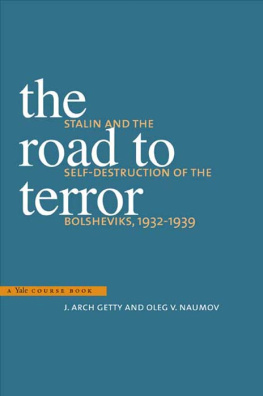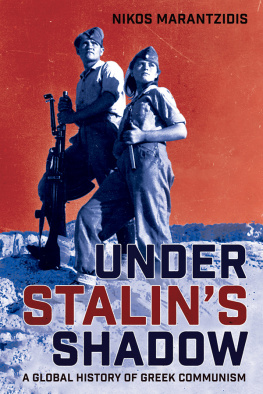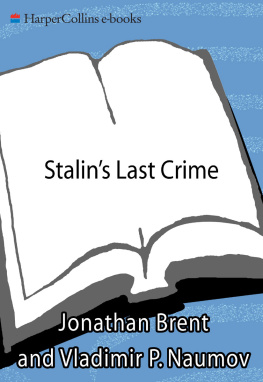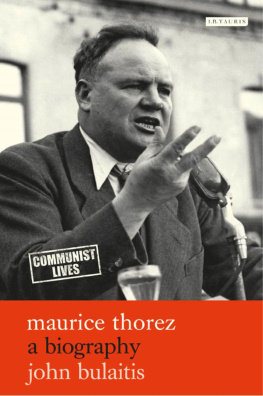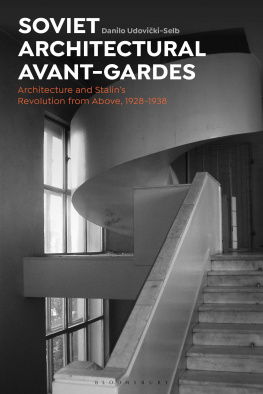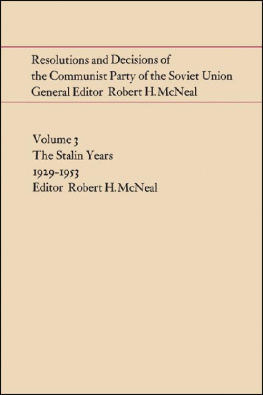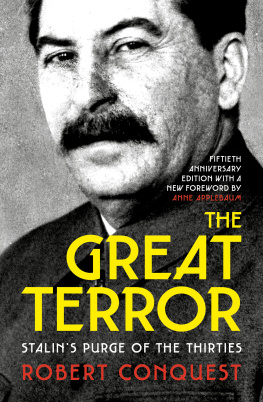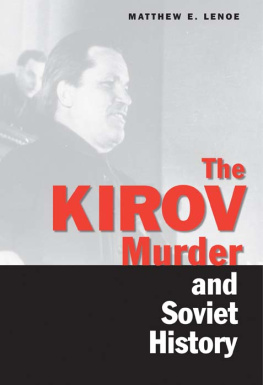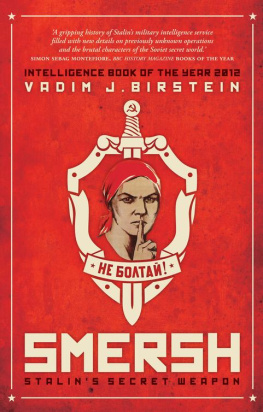The Road to Terror
The Road to Terror
Stalin and the Self-Destruction
of the Bolsheviks, 19321939
Updated and Abridged Edition
J. Arch Getty
and
Oleg V. Naumov
Archival Research Team
N. V. Muraveva, E. P. Karavaeva, and E. E. Kirillova
Translations by Benjamin Sher
Yale University Press
New Haven and London
Documents that are held by the Russian State Archive of Social and Political History (RGASPI), the Russian State Archive of Contemporary History (RGANI), and the State Archive of the Russian Federation (GARF) are used with the permission of these archives.
Copyright 2010 by Yale University.
All rights reserved.
This book may not be reproduced, in whole or in part, including illustrations, in any form (beyond that copying permitted by Sections 107 and 108 of the U.S. Copyright Law and except by reviewers for the public press), without written permission from the publishers.
Set in Sabon type by The Composing Room of Michigan, Inc., Grand Rapids, Michigan. Printed in the United States of America by Sheridan Books.
Library of Congress Cataloging-in-Publication Data
Getty, J. Arch (John Arch), 1950
The road to terror : Stalin and the self-destruction of the Bolsheviks, 1932-1939 / J. Arch Getty and Oleg V. Naumov; translations by Benjamin Sher. Updated and abridged ed.
p. cm. (Annals of communism)
Archival research team: N. V. Muraveva, E. P. Karavaeva, and E. E. Kirillova.
Includes bibliographical references and index.
ISBN 978-0-300-10407-3 (pbk.: alk. paper) 1. Political purgesSoviet UnionHistory Sources. 2. Soviet UnionPolitics and government1917-1936Sources. 3. Soviet UnionPolitics and government1936-1953Sources. 4. Kommunisticheskaia partiia Sovetskogo SoiuzaPurgesSources. 5. TerrorismSoviet UnionSources. 6. Stalin, Joseph, 1879-1953Sources. I. Naumov, Oleg V. II. Sher, Benjamin. III. Title.
DK267.G45 2010
947.o842dc22
2009020426
A catalogue record for this book is available from the British Library.
10 9 8 7 6 5 4 3 2 1
Yale University Press gratefully acknowledges the financial support given for this publication by the National Endowment for the Humanities and Open Society Fund (New York).
This volume has been prepared with the cooperation of the Russian State Archive of Social and Political History (RGASPI) in the framework of an agreement concluded between RGASPI and Yale University Press.
Contents
Appendixes
Preface
This volume is an updated and abridged version of our documentary monograph The Road to Terror: Stalin and the Self-Destruction of the Bolsheviks, 19321939 (New Haven, 1999). The lengthy archival documents in the first edition have been removed or dramatically shortened, and the text has been rewritten both to stand alone as an interpretation and to reflect new sources and studies that have appeared since the first edition.
In the ten years since the first edition of Road to Terror appeared, a substantial amount of new archival documentation has become available, through either published works or the ongoing process of archival declassification in Russia. Despite the weariness of the Russian public with gruesome revelations from the Stalin period, some important monographs have also appeared there. Wherever relevant, the new documentation and the recent scholarly studies have been incorporated into this edition.
The archival declassification process in Russia has unfortunately slowed in recent years, which makes historians even more grateful for some remarkable documentary publication projects organized by prominent scholars in Russia. The late Alexander Yakovlevs Rossiia XX Vek series, published by his Mezhdunarodnyi Fond Demokratiia, has produced more than fifty substantial volumes of documents on all periods of Soviet history. The volumes of Viktor P. Danilovs Tragediia sovetskoi derevni have provided voluminous and detailed documentation on collectivization and agriculture in general.
In fact, in the past decade the bright lights in Russian publishing on the Stalin period have been documentary collections. Unfortunately, with very few exceptions, scholarly studies have been tendentious and of uneven quality. Given that Stalin so dominated twentieth-century Russia, we should probably not be surprised that he also dominates todays historical writing. Russian scholars are almost completely focused on the person of Stalin and sensational revelations. Most of the serious historical works that have been published in the past ten years have been either narrowly focused pro- or anti-Stalin polemics, or sensational works on spies and the secret workings of police agencies. With some important exceptions, these works contain little if any documentation, few if any footnotes. Social history, political economy, or historical treatments of the Soviet period as something other than the manifestation of Stalins personality or dictatorship are hard to find.
Historians are always pleased when the appearance of new source material supports rather than contradicts the conclusions they had previously reached. We can confidently report that although a few details have changed or become clearer, the conclusions we had reached ten years ago remain substantially unchanged.
Acknowledgments
This research was supported in part by a grant from the International Research and Exchanges Board, with funds provided by the U.S. Department of State (Title VIII program) and the National Endowment for the Humanities. I received additional support from the National Endowment for the Humanities and from the University of Californias Academic Senate.
People who have influenced this work either personally or through their scholarship are too numerous to mention but would include Ken Bailes, Bill Chase, Sheila Fitzpatrick, James Harris, Hiroaki Kuromiya, Roberta Manning, Robert McNeal, Alec Nove, Lewis Siegelbaum, Peter Solomon, Jr., Ronald Suny, and Lynne Viola. I have benefited greatly from conversations with O. V. Khlevniuk, V. A. Kozlov, V. P. Naumov, A. P. Nenarokov, and A. K. Sokolov (and the rebyata in his laboratory). I received indescribable additional help from Nancy Getty, T. V. Goriacheva, N. V. Muraveva, L. V. Poliakov, Mary Rakow, Irina Renfro, and N. P. Yakovlev. Alice, Earl, and Floyd know who they are and what they did. I owe a unique debt to my friend Gbor T. Rittersporn, who aided me in all the above categories. I always feel fortunate to benefit from the deep knowledge of the 1930s which he so generously shares.
None of the organizations or people mentioned above are responsible for the views expressed in this book. They deserve due credit for anything good in what follows; I alone am to blame for any errors. Finally, I could not have completed this work without the warm and tolerant support of my family. Nancy, Amanda, Jessica, and John tolerated Moscow, my absences when I was there without them, and my occasional mental absences when I was at home.
Arch Getty
Santa Monica, California, 2009
Notes on Transliteration and Terminology
In rendering Russian to English we use a modified version of the standard Library of Congress system in the text and documents.
In final position:
ii = y (Trotsky, not Trotskii)
iia = ia (Izvestia, not Izvestiia)
nyi = ny (Nagorny, not Nagornyi)
In initial position:
E = Ye (Yezhov, not Ezhov)
Ia = Ya (Yaroslavsky, not Iaroslavsky)
Iu = Yu (Yudin, not Iudin)
In citations and translators notes, we follow the Library of Congress system.
In the 1930s the Communist Party was known as the All-Union Communist Party (Bolsheviks), Vsesoiuznaia Kommunisticheskaia Partiia (bolshevikov) or VKP(b) in its Russian acronym. In practice, its highest policy-making body was the Politburo, which in the 1930s consisted of roughly ten full (voting) members and five candidate (nonvoting) members. In the beginning of the period covered by this study, the Politburo met about once per week; by the end of the period it was meeting about once a month. Each meeting technically had dozens or even hundreds of items on the agenda, but increasingly these were decided without formal meetings, by polling the members. Other top party committees included the Secretariat and the Orgburo, both of which were largely concerned with personnel assignments.
Next page
